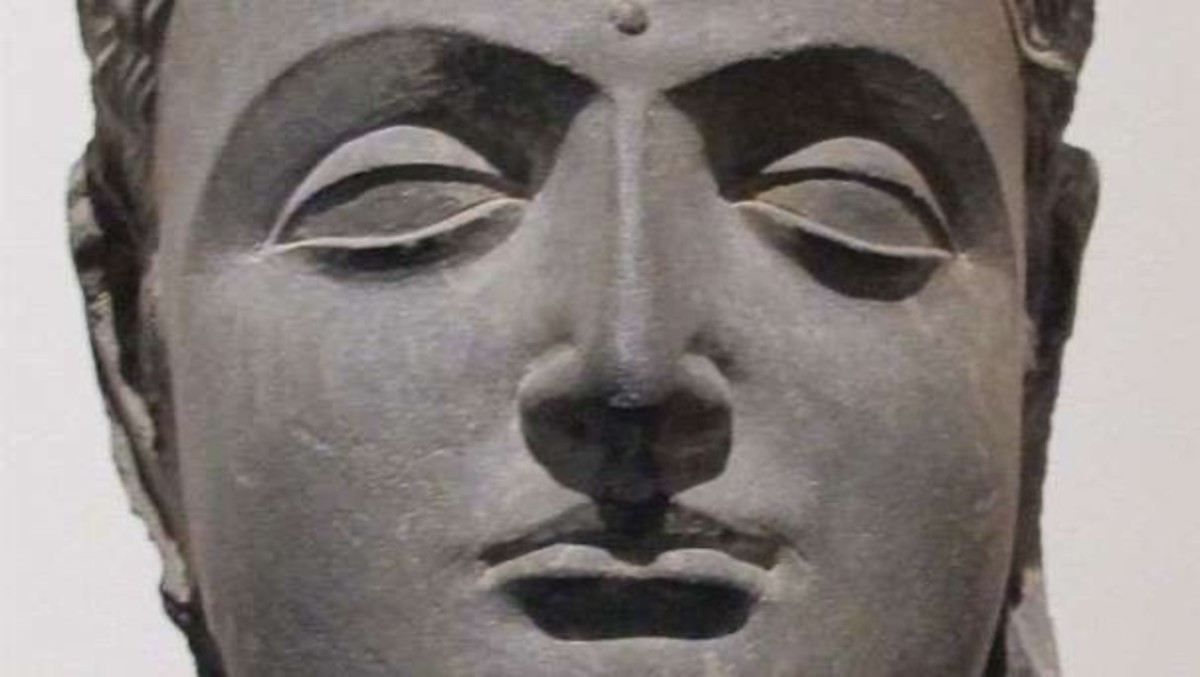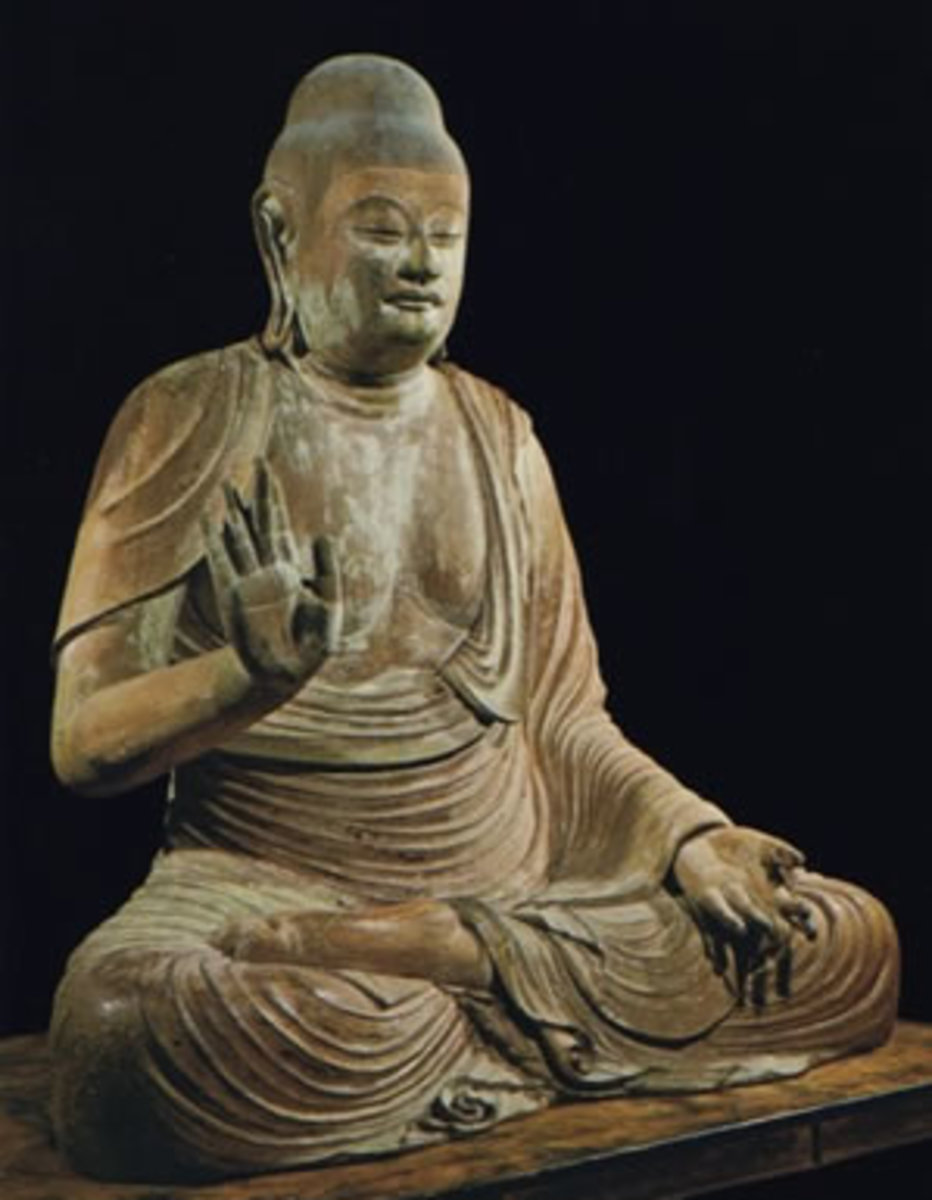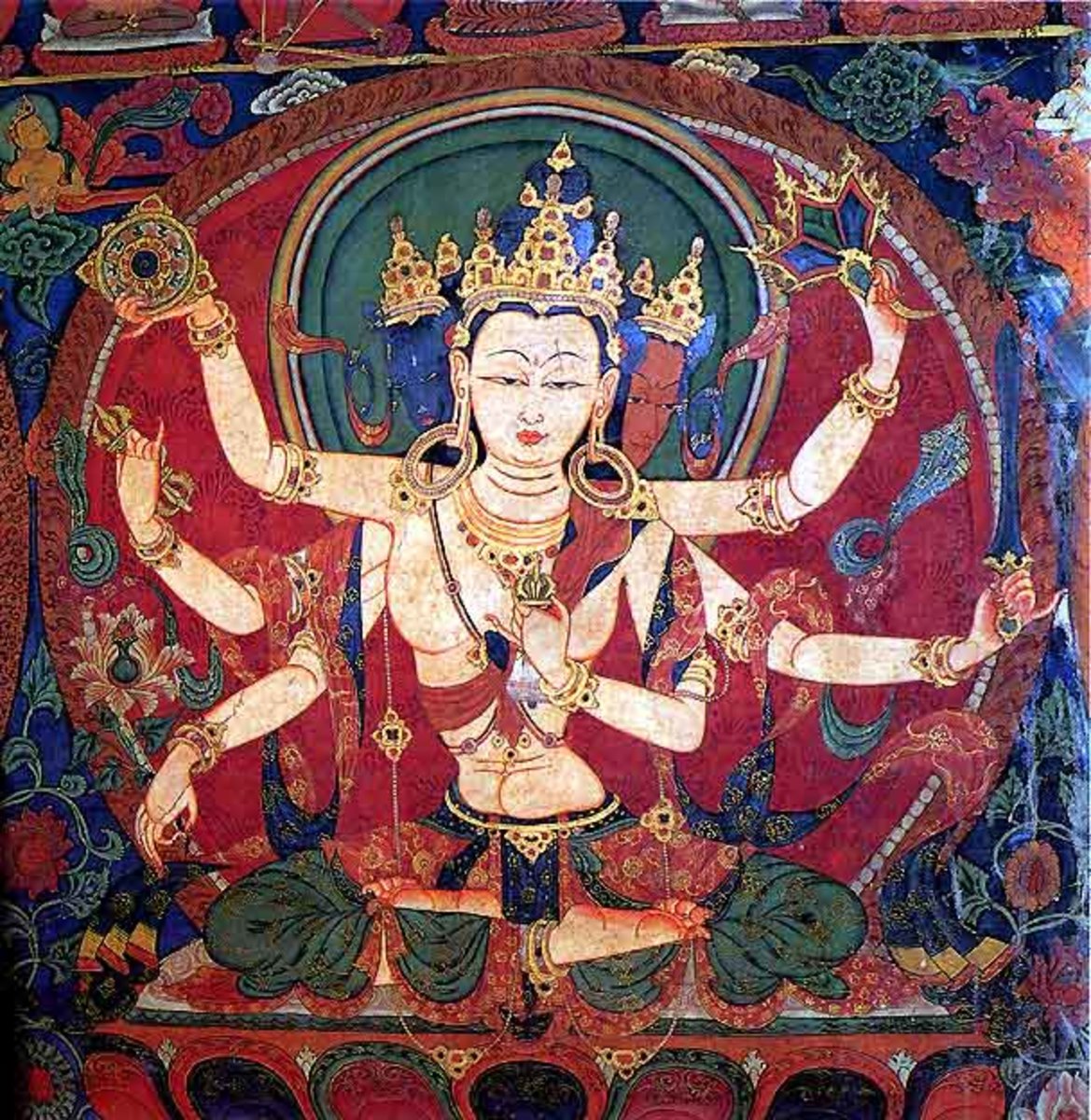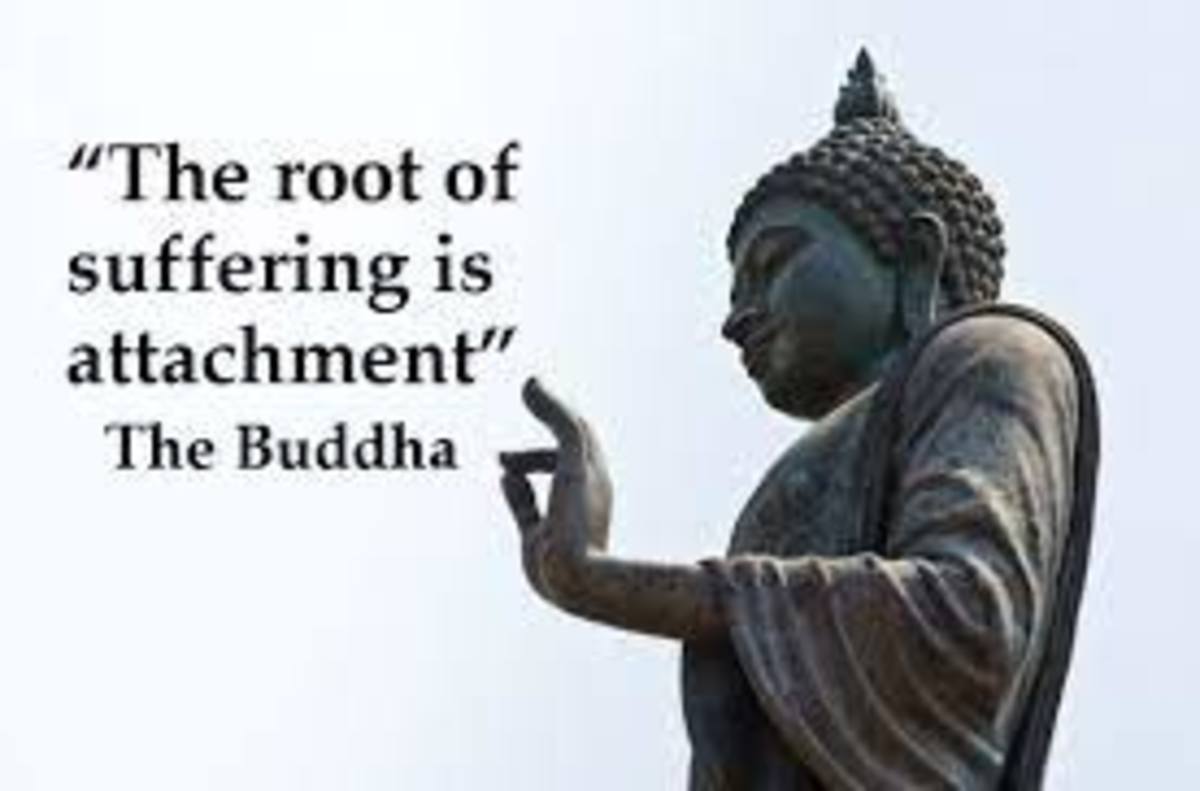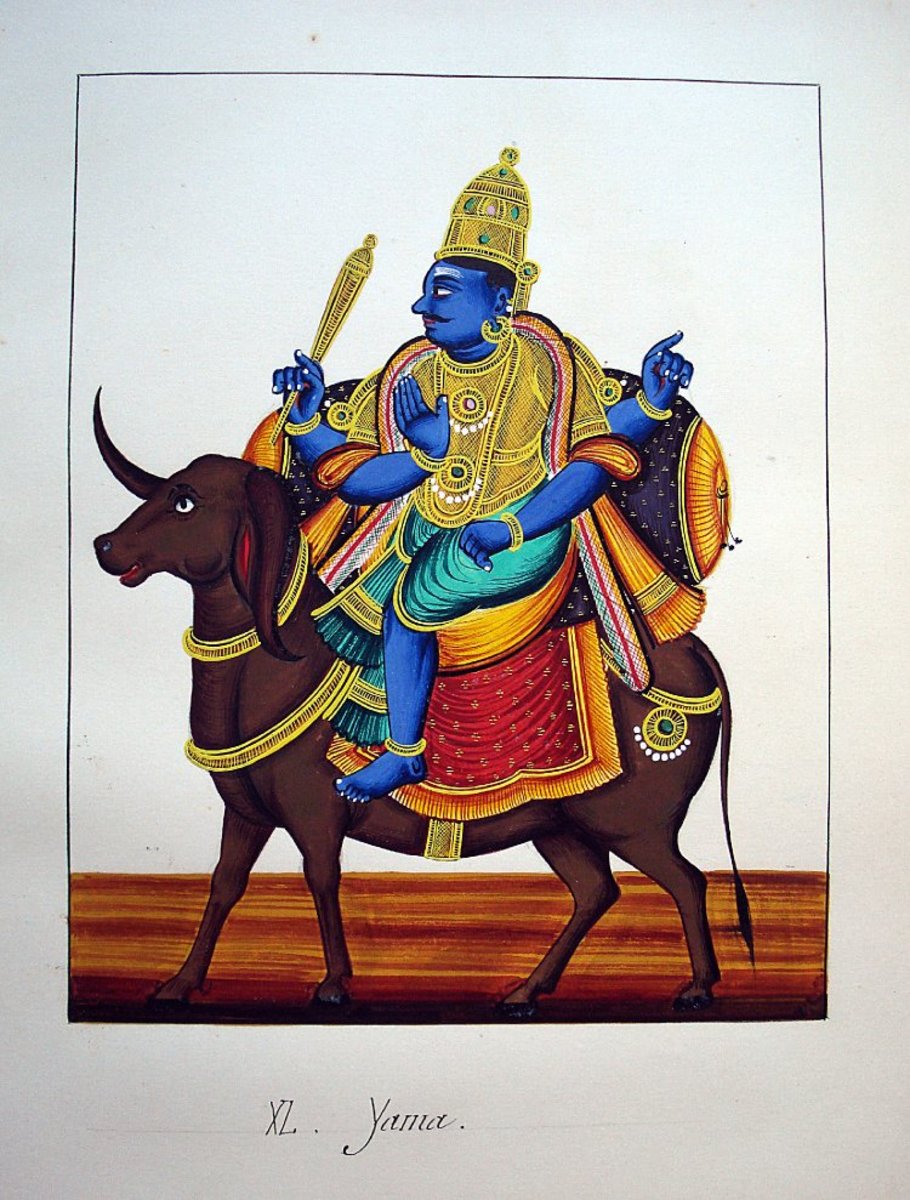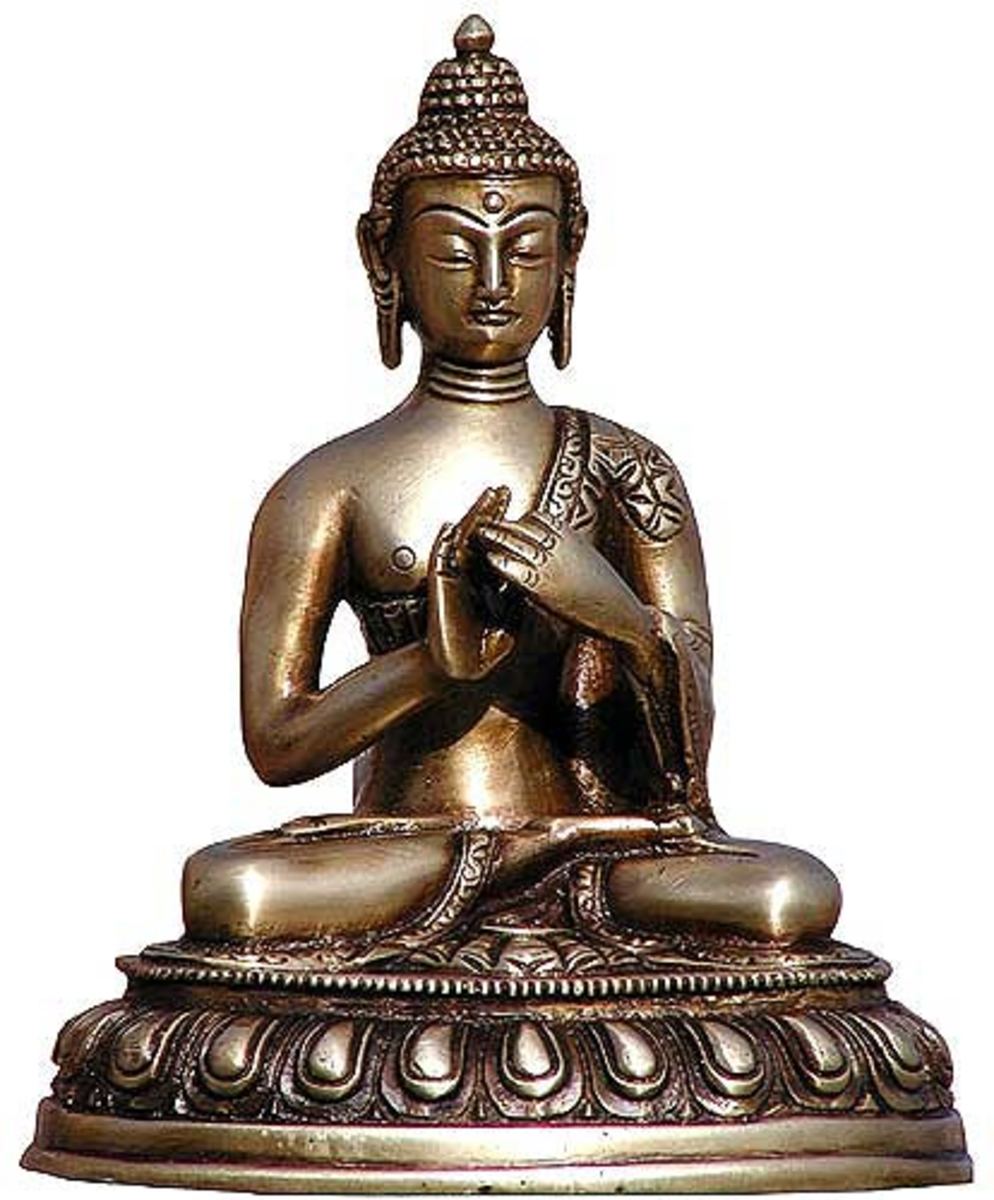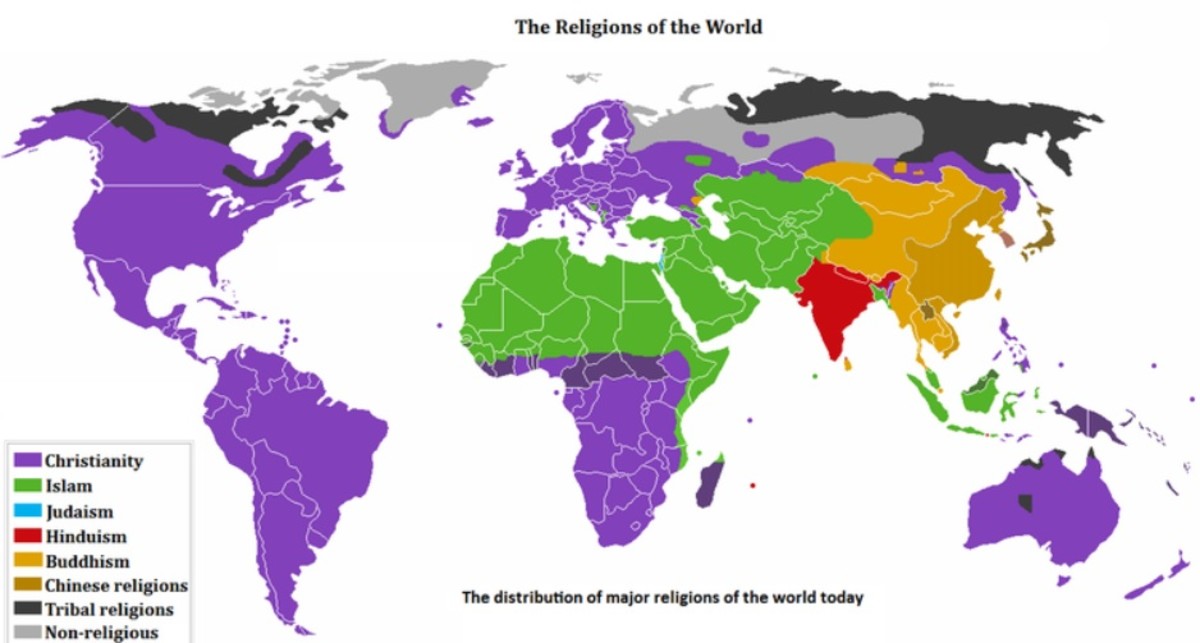Basic Tenets of Mahayana Buddhism
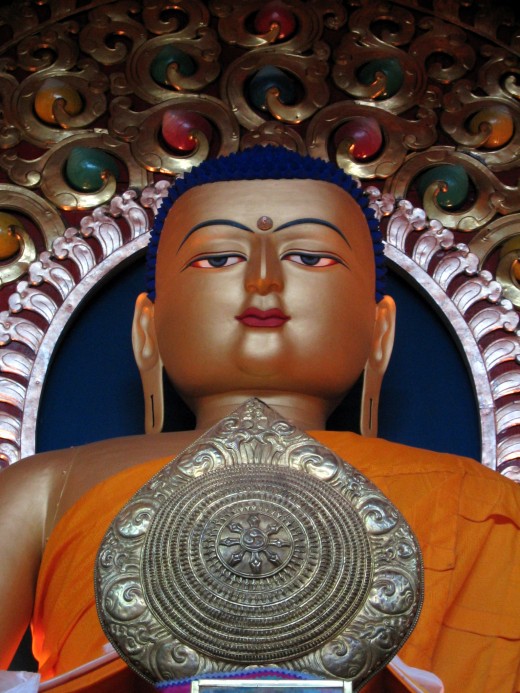
"And feudal though the system was, it was different from any other feudal system, because at the apex of it was the incarnation of Chenresi [the Bodhisattva of compassion], a being whom all the people, for hundreds of years, had regarded with the highest reverence. The people felt that above all the petty officials of state, there was a final appeal to a source of justice which they could absolutely trust; and in fact, no ruler with the traditions and training and religious grace of a Dalai Lama could possibly have become an unjust tyrant.
So we were happy. Desire brings discontent; happiness springs from a peaceful mind. For many Tibetans, material life was hard, but they were not the victims of desire; and in the simplicity and poverty among our mountains, perhaps there was more peace of mind than there is in most of the cities of the world" (Gyatso, Tenzin 1962:68).
Approximately one third of the Tibetan male population prior to 1959 was in the monastic realm. Within the monastic realm, they could devote their entire life to their religion and if educational pursuits were an interest, they could study a variety of subjects at various Tibetan colleges and universities. As a result of the Tibetans' incredible degree of involvement within the monastic realm, a high degree of literacy and Tibetan nationalism existed. The basis upon which all of Tibetan culture rested was their religion, Mahayana Buddhism.
Mahayana Buddhism grew up in India as a critique of certain tendencies in the Hinayana, the earlier form of Buddhism. Mahayana means "Greater Vehicle" and Hinayana means "Lesser Vehicle" although adherents to Hinayana would prefer that Hinayana be translated as "Way of the Elders". The Mahayana is known as the "Greater Vehicle" because their interpretation of Buddhism is more species centered as opposed to the Hinayana interpretation which is more self centered. Hinayanists prefer the term "Way of the Elders" because this denotes that Hinayana was in existence before Mahayana.
The Hinayanists, unlike the Mahayanists, renounced any further involvement in the plight of the world and strove instead for their own release from suffering. "The Mahayanists believed that by severing every last trace of attachment to the world [as did the Hinayanists] one failed to acknowledge the essential connectedness one has with life and to discover the meaning of one's fundamental participation in existence" (Batchelor 1987:46). For the Mahayanists, true spiritual nobility was found primarily not in detachment and release, as it was for Hinayanists, but in compassion and love. Before I elaborate specifically on Mahayana Buddhism, perhaps it would be best to describe the basic teachings of Lord Buddha.
The historical Buddha was born in Nepal and grew up and wandered throughout India around 500 BC. The crux of what the Buddha taught can be found under The Four Noble Truths which are as follow:
1. existence is unhappiness
2. unhappiness is caused by selfish craving
3. selfish craving can be destroyed
4. selfish craving can be destroyed by following the eightfold path of which there are eight steps. They are as follows:
1. Right understanding
2. Right purpose
3. Right speech
4. Right conduct
5. Right vocation
6. Right effort
7. Right alertness
8. Right concentration
According to Mahayana Buddhist teachings, if one has these qualities, they can "culminate in the achieved power of absolute concentration, by which the mind shows itself completely free from the sudden promptings and unpredictable flittings due to selfish craving" (Burtt 1982:29).
At the core of Mahayana Buddhism is the idea of the Bodhisattva, one who wishes to realize enlightenment so that he/she can help all sentient beings reach enlightenment. This is in stark contrast to the Hinayanist who wishes only to obtain enlightenment for him/her self. On attaining enlightenment, the Bodhisattva does not depart from the earthly plane to enter Nirvana. He/she remains in the world, appearing like an ordinary person, but devoting his/her compassionate skill to the aid of others. "He shares and bears the burden of their suffering, in loving union with them, instead of merely giving others an example of a person who has overcome the causes of suffering for himself" (Burtt 1982:130). Mahayana Buddhists aspire to be selfless and Bodhisattva-like so they will be able to cultivate a
"sense of loving unity with all men and women however imperfect they at present may be, expressed in a tender and consuming eagerness to help them achieve the goal of salvation too, and in a realization that because of one's compassionate concern for them one's own enlightenment of spiritual peace cannot be perfect as long as salvation has not been universally won" (Burtt 1982:124).
The basic virtue that underlies what is best about Tibetans is the predominant value of Buddhism...compassion.
"It is intimately associated with Avalokiteshvara, the Bodhisattva of mercy, and it figures prominently in Jataka stories (tales of the Buddha in his previous lives), which stress the supreme importance of taking pity on suffering beings. It is a part of Buddhist reverence for all forms of life, animal as well as human" (Nowak 1984:92).
Those aspiring to Bodhisattva[hood], which includes many Tibetans, must practice the qualities of generosity, ethics, tolerance, energy, meditation, and most importantly, wisdom. The Bodhisattva should possess undying generosity in that he/she will give whatever they have in order to help others. As far as discipline is concerned,
"the Bodhisattva's conduct is like the walk of an elephant. Elephants do not hurry; they just walk slowly and surely through the jungle, one step after another. They just sail right along. They never fall nor do they make mistakes. Each step they take is solid and definite" (Trungpa 1973:174).
Though the rank of Bodhisattva sounds impossible to reach, there are many Tibetans who at least try to be bodisattva-like.
The Bodhisattva should also have infinite patience; "Not expecting anything, we [they] do not get impatient" (Trungpa 1973:174). The Bodhisattva also has continual joyous energy because he/she is completely interested in the limitless possibilities for creativity present within people's lives. One aspiring to Bodhisattva[hood] should "never see situations as uninteresting or stagnant at all, because the Bodhisattva's view of life is extremely open-minded, intensely interested" (Trungpa 1973:175-176).
A Bodhisattva-to-be must also practice meditation. It is through meditation that one can awake and perceive the true nature of reality. Most importantly, the Bodhisattva-to-be must be in search of, or possess, limitless knowledge, the knowledge that is able to cut through ignorance. Without knowledge, the other five virtues are useless because it is knowledge that destroys ignorance. These virtues are important because even if no one can reach them, at least they give the adherents something to strive for.
The reason Mahayana Buddhists want to obtain enlightenment for all sentient beings is because they want all sentient beings to escape from cyclic existence which is seen as an uncontrolled, endless process of suffering, i.e. birth, ageing, sickness, and death. Mahayana Buddhists try to "cultivate a realization that all beings are equal in the sense that all want happiness and do not want suffering" (Hopkins 1984:107). The main obstacle to our obtaining enlightenment, according to the teachings of Mahayana Buddhism, is our ignorant conception that things inherently exist. If one can acquire and gain mastery over the Bodhisattva qualities mentioned above, then according to Mahayana Buddhism, one can gain the unimpeded realization that things do not inherently exist. One can cut through the attitude that one has oneself, revealing what one really is.
"It is important for us to strive to understand the emptiness of phenomena because all the problems and suffering experienced by us and other living beings stem from a mistaken view of reality. Through our ignorance of the true nature of phenomena we develop the conceptual mind that holds phenomena to be inherently existent. The mind is known as self-grasping since it apprehends, or grasps, phenomena as having an inherently existent self, or identity. The mind of self-grasping gives rise to all other delusions, such as anger and attachment, and is the root cause of all suffering and dissatisfaction. Therefore if we wish to be free from suffering we must abandon our self-grasping" (Gyatso, Geshe Kelsang 1985:43).
Here is a related hub I created:

© 2010 Missing Link


